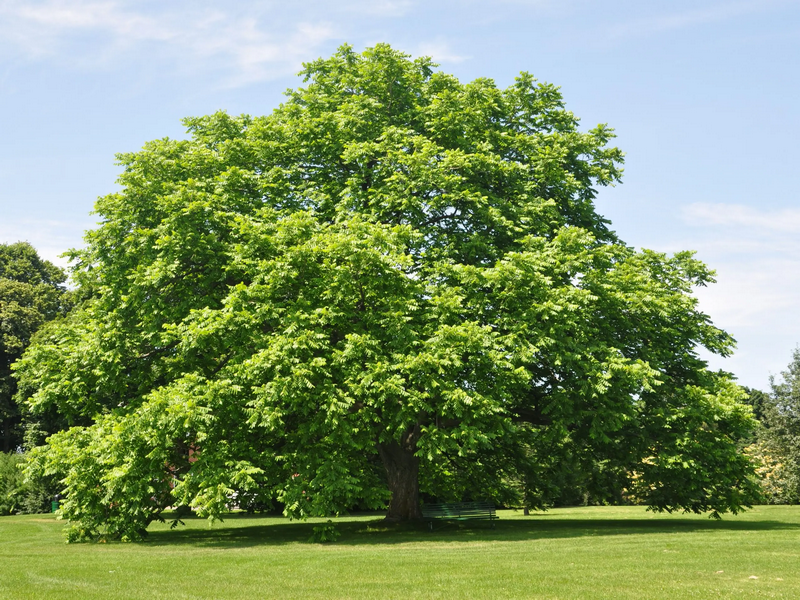Butternut Tree
Juglans cinerea
Click here to download a PDF of this plant information page (for printing).

Sun Exposure: Full Sun
Season of Interest: Summer, Fall
Bloom Time: April
Bloom Color: Gold (catkin)
Height: 40 to 60 ft.
Spread: 40 to 60 ft.
Spacing: 45 ft.
Water Needs: Average
Maintenance: Prune for shape when young
Soil Type: Clay, Loam, Sandy
Soil pH: Acidic, Neutral
Soil Drainage: Well drained
Pests: Squirrels eat the nuts
Diseases: Butternut canker, Thousand canker disease
Wildlife: Birds, Small mammals

Description:
The butternut tree is one of the hardiest nut trees. The tree was once highly valued for its nuts with a rich, sweet, buttery flavor, its attractive light golden wood, and its broadly rounded crown that provides shade in the landscape. Yellowish-green flowers appear in late spring, giving way to the fruits that ripen into nuts in fall. Nowadays, however, butternut trees are increasingly rare in the wild, and they are not commonly found at nurseries. The reason for that is the susceptibility of the tree to a deadly fungal disease known as plants.ces.ncsu.edu/plants/juglans-cinerea
Care and Growing Tips:
The tree can be planted in the spring or fall. It grows fairly slowly, adding less than 12 inches per year. It can live up to 75 years. Butternut is quite a broad tree, growing as much as 60 feet wide, so it should be planted in an area with plenty of space and full sun. Because the tree has deep taproots, it is quite difficult to move butternuts once they are established so pick the location carefully.
Butternut trees need full sun; they do not tolerate shady conditions. The tree is best grown in open spaces far away from other trees and plants. The tree does best in rich soils that are fairly moist and slightly acidic, with a pH between 6.8 and 7.2. This tree does best with consistent moisture but established trees can tolerate drought.
Butternut trees are very hardy trees that can be grown down to USDA zone 3. High humidity in combination with dense canopies and poor air circulation leads to a higher incidence of the deadly butternut canker. If you planted the tree in rich soil, there is no need to fertilize the tree.